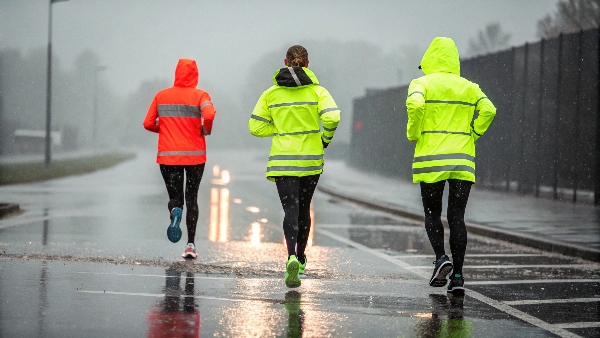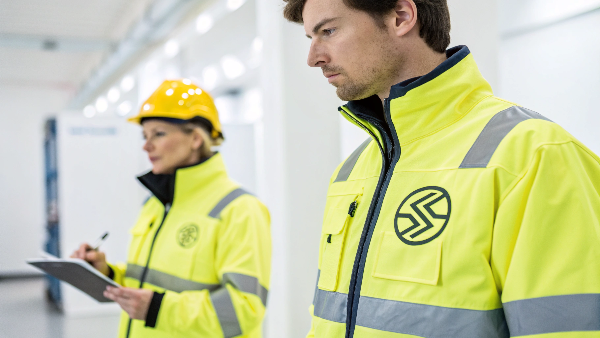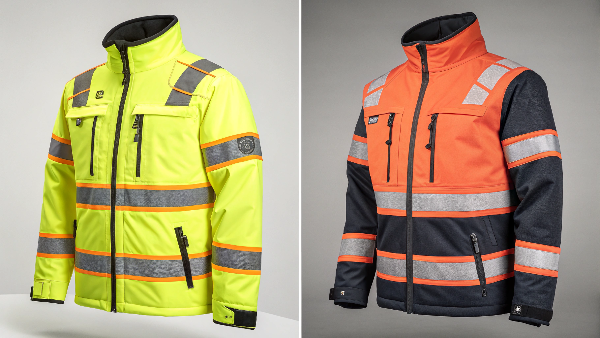Let’s say you’re the production manager of a large manufacturing
facility or a construction site in the middle of summer. It’s hot. It’s
humid. Your workers are sweating. Their productivity is dropping. And
more importantly, they’re at risk for heat stress. You’ve heard about
cooling vests and how they can help. But you’re not sure if they work in
high humidity.
You start researching and find a lot of conflicting information. Some
people say they’re great. Others say they don’t work in high humidity.
Meanwhile, your workers are getting more and more uncomfortable. And
you’re losing time and money. The stakes are high. You’re responsible
for your team’s safety. And you have deadlines to meet.
In this in-depth article, we’re going to clear up the confusion. We’ll give
you the information you need to know if cooling vests work in high
humidity. We’ll tell you if they work at all. We’ll tell you the
disadvantages. And we’ll recommend the best ones to buy. By the end of
this article, you’ll have the information you need to make a decision to
keep your team safe and productive.
Do Cooling Vests Work in High Humidity?
Cooling vests can work in high humidity, but they work better in dry
heat. Let me explain. Let’s talk about how different types of cooling
vests work.
Evaporative Cooling Vests
Evaporative cooling vests work by using the evaporation of moisture
to provide cooling. You soak the vest in water before you wear it. As the
water evaporates, it pulls heat from your body, creating a cooling effect.
But in high humidity, the air already has a lot of moisture in it. This
makes it harder for the water to evaporate. So, the vest doesn’t cool as
well. In contrast, in dry heat, the water evaporates better, making these
vests very effective.

Understanding how cooling vests work in different environments will
help you make the best decision for your team. As we go through this
article, we’ll talk about how well cooling vests work, what’s bad about
them, and which ones work best in different conditions. This will help
you keep your team safe and productive, no matter how hot it is.
How Effective Are Cooling Vests?
Cooling vests can help with heat stress. But it depends on the type of
cooling vest and the environment, especially the humidity. Here’s what
you need to know:
Evaporative Cooling Vests
Mechanism: These vests rely on the evaporation of moisture to provide cooling. They are typically soaked in water before use.
Effectiveness in Dry Heat: In dry heat conditions, the evaporation process can efficiently remove heat from the body, providing a cooling sensation.
Effectiveness in High Humidity: In high humidity environments, the evaporation process is hindered due to moisture-saturated air, reducing the vest’s cooling effectiveness.
Phase Change Cooling Vests
Mechanism: Phase change cooling vests use phase change materials (PCMs) that absorb and release heat at specific temperatures. These materials can be frozen and then gradually release cooling as they melt.
Effectiveness in Dry Heat: Effective in dry heat as they provide consistent cooling without relying on evaporation.
Effectiveness in High Humidity: More effective in high humidity compared to evaporative cooling vests, as they do not rely on evaporation. However, they need to be recharged, usually by placing the PCM packs in a freezer.
Ice Pack Cooling Vests
Mechanism: These vests use frozen gel packs to provide direct cooling. The gel packs can be easily removed from the vest and placed in a freezer to re-freeze and recharge them.
Effectiveness in Dry Heat: Effective in dry heat as they provide direct cooling.
Effectiveness in High Humidity: Effective in high humidity as well, as they provide direct cooling without relying on evaporation. However, they can be heavy and may cause discomfort due to the cold temperature of the packs.
Do Evaporative Cooling Vests Work?
Evaporative cooling vests can cool you down. But they don’t work as
well in high humidity. Here’s what you need to know:
Evaporative Cooling Vests
Mechanism: Rely on the evaporation of moisture to provide cooling. Typically soaked in water before use.
Effectiveness in High Humidity: In high humidity, the evaporation process is hindered since the air is already saturated with moisture, reducing the vest’s cooling effectiveness.
Best Use: Best suited for dry heat conditions where the evaporation process can efficiently remove heat from the body. In such conditions, these vests can be highly effective, providing a significant cooling effect.
What Are the Disadvantages of Cooling Vests?
While cooling vests can be beneficial, they are not without disadvantages. Here are some key points to consider:
Weight
Ice Pack Cooling Vests: These vests, especially those using ice packs or phase change materials, can be quite heavy. This added weight can increase fatigue and impair mobility, especially during physical activities like sports or manual labor.
Phase Change Cooling Vests: While generally lighter than ice pack vests, they still add some weight due to the PCM packs.
Comfort
Ice Pack Cooling Vests: Some cooling vests can cause discomfort due to their weight or the cold temperature of the cooling packs. This can be particularly problematic if the vest is worn for extended periods.
Evaporative Cooling Vests: These can feel damp or wet, which might be uncomfortable for some users.
Recharge Time
Phase Change Cooling Vests: These require recharging, usually by placing the PCM packs in a freezer. This can be inconvenient if a freezer is not readily available.
Ice Pack Cooling Vests: Similarly, these require the gel packs to be re-frozen, which can be time-consuming and inconvenient.
Cost
High-Quality Vests: High-quality cooling vests can be expensive. While they are an investment in worker safety and productivity, the initial cost can be a barrier for some businesses.
Does Cooling Clothing Really Work?
Yes, cooling clothing can help you stay cool in hot weather. Here’s what
you need to know about how different types of cooling clothing work and
how well they work.
Evaporative Cooling Clothing
Mechanism: Relies on moisture wicking and evaporation to provide cooling. Typically made from materials that wick moisture away from the body.
Effectiveness: Helps remove sweat from the body, and as the moisture evaporates, it removes heat from the body, creating a cooling sensation.
Best Use: Best suited for dry heat conditions where the evaporation process can efficiently remove heat from the body.
Phase Change Cooling Clothing
Mechanism: Uses phase change materials (PCMs) that absorb and release heat at specific temperatures.
Effectiveness: Provides consistent cooling without relying on evaporation, making it suitable for both dry and humid conditions.
Recharge: Requires recharging, usually by placing the PCM packs in a freezer.
Ice Pack Cooling Clothing
Mechanism: Uses frozen gel packs to provide direct cooling.
Effectiveness: Effective in both dry and humid conditions as it provides direct cooling without relying on evaporation.
Comfort: Can be heavy and may cause discomfort due to the cold temperature of the packs.
Which Cooling Vest is Best?
Based on what I’ve read and what people have told me, the
ThermApparel UnderCool cooling vest is the best overall for dealing
with heat sensitivity and multiple sclerosis symptoms. Here’s what you
need to know:
ThermApparel UnderCool Cooling Vest
Design: Lightweight and comfortable, designed to be worn discreetly under clothing.
Mechanism: Uses phase change materials (PCMs) that provide consistent cooling.
Effectiveness: Suitable for both dry and humid conditions.
Recharge: Requires recharging by placing the PCM packs in a freezer.
User Feedback: Highly rated for its comfort and effectiveness.
Other notable options include:
FlexiFreeze Ice Vest
Design: Uses ice packs to provide direct cooling.
Effectiveness: Effective in both dry and humid conditions.
Comfort: Can be heavy and may cause discomfort due to the cold temperature of the packs.
User Feedback: Generally positive reviews for its cooling performance, but some users note the weight as a disadvantage.
TechKewl Phase Change Cooling Vest
Design: Uses phase change materials (PCMs) that provide consistent cooling.
Effectiveness: Suitable for both dry and humid conditions.
Recharge: Requires recharging by placing the PCM packs in a freezer.
User Feedback: Highly rated for its consistent cooling performance and comfort.
Can You Put a Cooling Vest in the Freezer?
Yes, you can put some cooling vests in the freezer to recharge or refreeze
the cooling packs or inserts. Here’s what you need to know about freezing
cooling vests.
Phase Change Cooling Vests
Mechanism: These vests use inserts or packs containing phase change materials (PCMs) that can be frozen to provide cooling.
Recharge: The PCM packs or inserts can be easily removed from the vest and placed in a freezer to re-freeze and recharge them.
Effectiveness: Once frozen, the PCM packs can provide consistent cooling for several hours. This makes them a convenient option for continuous use, provided that there is access to a freezer for recharging.
Ice Pack Cooling Vests
Mechanism: These vests use frozen gel packs to provide direct cooling.
Recharge: The gel packs can be easily removed from the vest and placed in a freezer to re-freeze and recharge them.
Effectiveness: Once frozen, the gel packs can provide direct cooling for several hours. However, the weight and initial cold shock can be a downside for some users.
Conclusion
In summary, cooling vests can work in high humidity. But it depends
on the type of vest and the environment. Evaporative cooling vests don’t
work well in high humidity. Phase change and ice pack cooling vests
work well in dry and humid conditions. But they have their
disadvantages. They’re heavy. And you have to recharge them.
For your business, buying the right cooling vest can make a big
difference in the safety and productivity of your workers, especially in
hot and humid conditions. I recommend the ThermApparel UnderCool
cooling vest. It’s lightweight and cools well. But you need to decide
what’s best for you and your working conditions.
By understanding how well cooling vests work, what’s bad about them,
and which ones to buy, you can make a decision that keeps your team
comfortable and safe, no matter how hot it is. Buying cooling vests can
help your team be more productive, reduce health risks, and keep
everyone happier in the summer heat.



